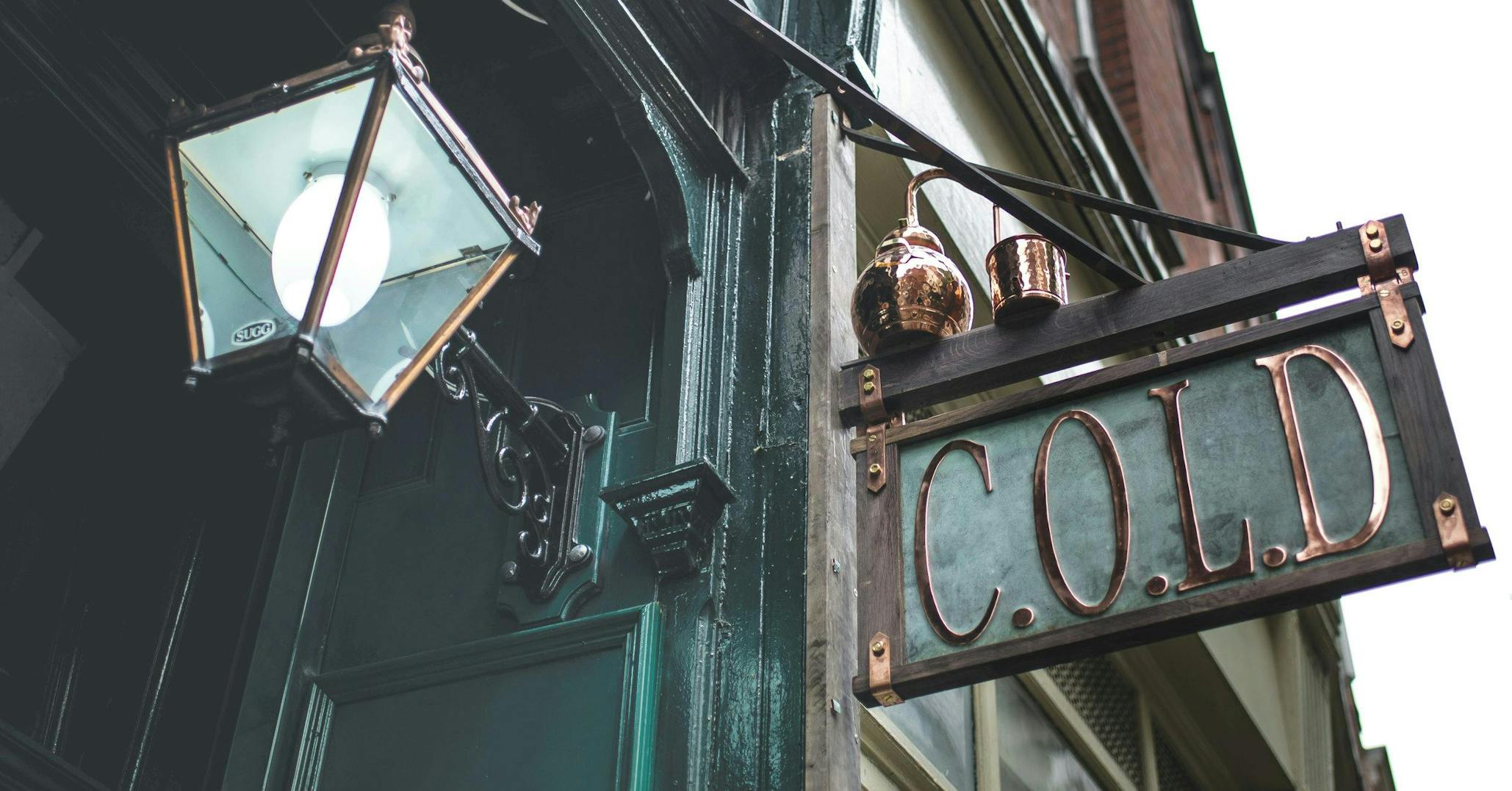
Discover the first distillery to open in the City of London in 200 years!
Where once the narrow, soot-choked lanes heaved with merchants hawking barely-drinkable (and only semi-legal) drams of gin, now gleaming towers of glass and chrome line streets bustling with besuited bankers.
Welcome to the City of London, and meet the gin celebrating the glorious past and the bright future of this proud patch.
From the Thames in the south to Chancery Lane in the north, east to Aldgate and west to Holborn, stretch the borders of the City of London. Within this square mile – or, to be completely accurate, 1.12 square miles – the whole history of London has played out as the city evolved from Roman backwater to global metropolis.
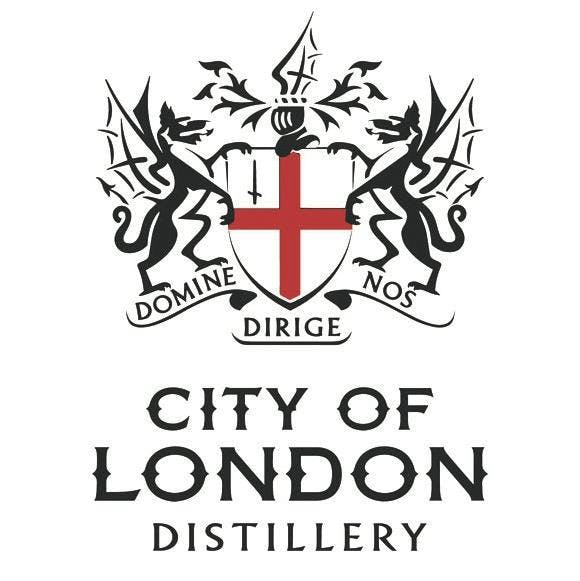
And, as the first distillery to operate within its boundary for 200 years, the City of London Distillery takes this heritage very seriously.
“We set out to bring the gin craze back to London,” says head distiller Guy Martin. “Back in the 18th century, there would have been gin distillers on every corner – not all legal, mind you. Gin has moved on leaps and bounds since then.”
The beautiful yellow bottle in your September Gin of the Month box is proof positive of that fact. Distilled in the heart of the Square Mile, it was inspired by the classic children’s nursery rhyme, “The Bells of London”.
“Oranges and lemons, say the bells of St Clements” goes the first line, and this gin makes spectacular use of the citrus fruits that would have flooded down the Thames from distant lands as the British empire flourished. From the gin craze of the 18th century to the gin boom of the 21st, discover the Six Bells Gin in this month’s box, and the rich history that inspired it.
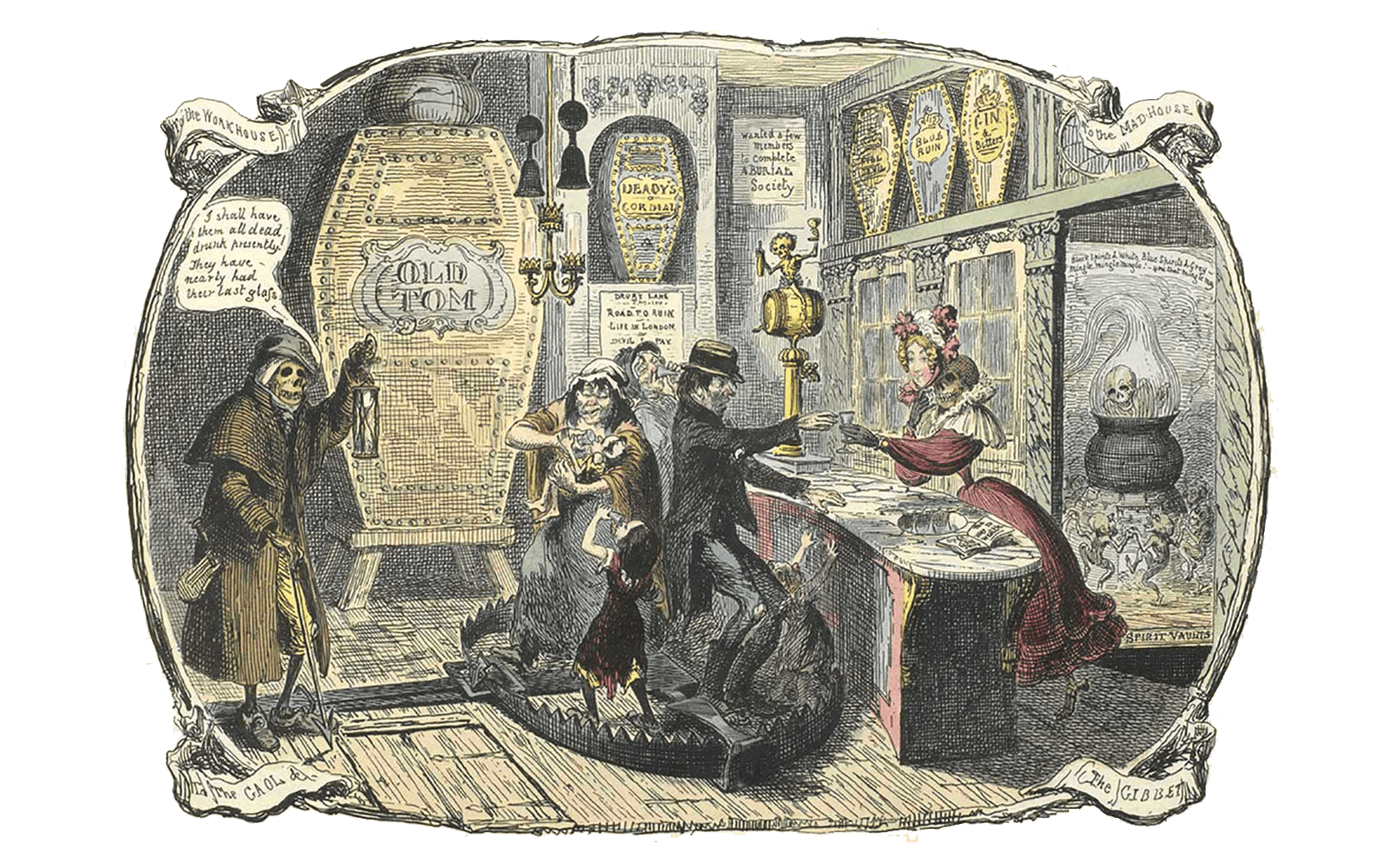
A Trip Down Gin Lane
We may think of gin as a quintessentially English drink, but our favourite spirit actually has its roots on the Continent – as a Dutch drink, called genever. For most of history it was beer and, later, brandy that the English swilled. But then, in the centuries-long conflict between Catholics and Protestants, a young, Dutch prince and his English wife snatched the crown in a bloodless revolution.
That king was William of Orange, a protestant whose father-in-law, the catholic James, he deposed. It was a time of Protestant revival and disdain towards Catholic France. In a patriotic fervour, the English ditched their preferred French brandy and began to quaff the favourite spirit of their new king.
At the same time, the government was making it easy for Englishmen and women to get their hands on a dram or two of gin. Taxes on French brandy went way up; taxes on gin were abolished, as were most licensing restrictions. Anyone in the country could distil gin – and distil they did.
Over the next decades, the streets of London, from the famous Drury Lane to the Seven Dials of Covent Garden, drowned in gin. Profitable to distil, cheap to buy and at times quite toxic to drink, the gin of the 18th century bears little resemblance to the spirit we love today. It was an instant hit with all strata of society, but it was when the destitute – crammed into slums, freezing and starving, with little hope for the future – wholeheartedly embraced the spirit that the ‘Gin Craze’ was truly born.
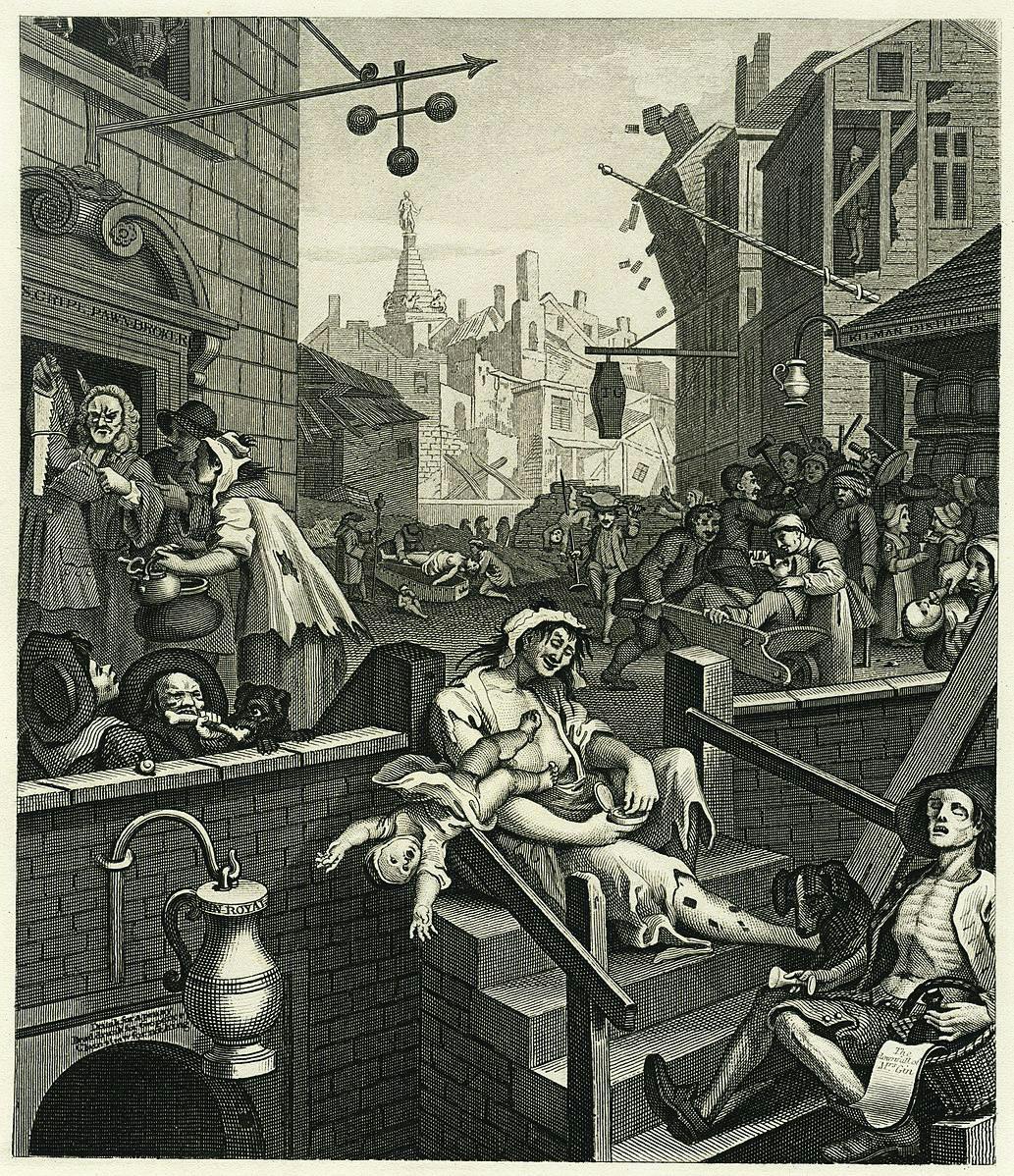
As social historian Thomas Fielding wrote in 1751, “The drunkenness I here intend is by this poison called Gin, the principal sustenance (if it may be so called) of more than a hundred thousand people in this Metropolis.”
As the papers howled about social disintegration, the artist Hogarth finished his famous print ‘Gin Lane’ and the middle classes fretted over the loosening morals of the working class, the government leapt into action. A series of laws passed in the late 1700s introduced high taxes on gin and shut down the majority of distillation. The streets of the City of London were utterly transformed.
For 200 years, not a drop of gin was (legally) distilled in the Square Mile. And then a publican by the name of Jonathan Clark had an idea.
The Heart of the City
Jon Clark and Guy have been friends going on five decades. They met working at a snooker club, which evolved into a golf club, and then became a pub that Guy was responsible for running. All that time, they remained close, and Guy had a front-row seat for Jon’s transformation from pub ownerto gin distiller.
Jon had been leasing a basement space on Bride Lane for decades before he decided to open a distillery. But it was always a project that was bubbling away in the back of his mind.
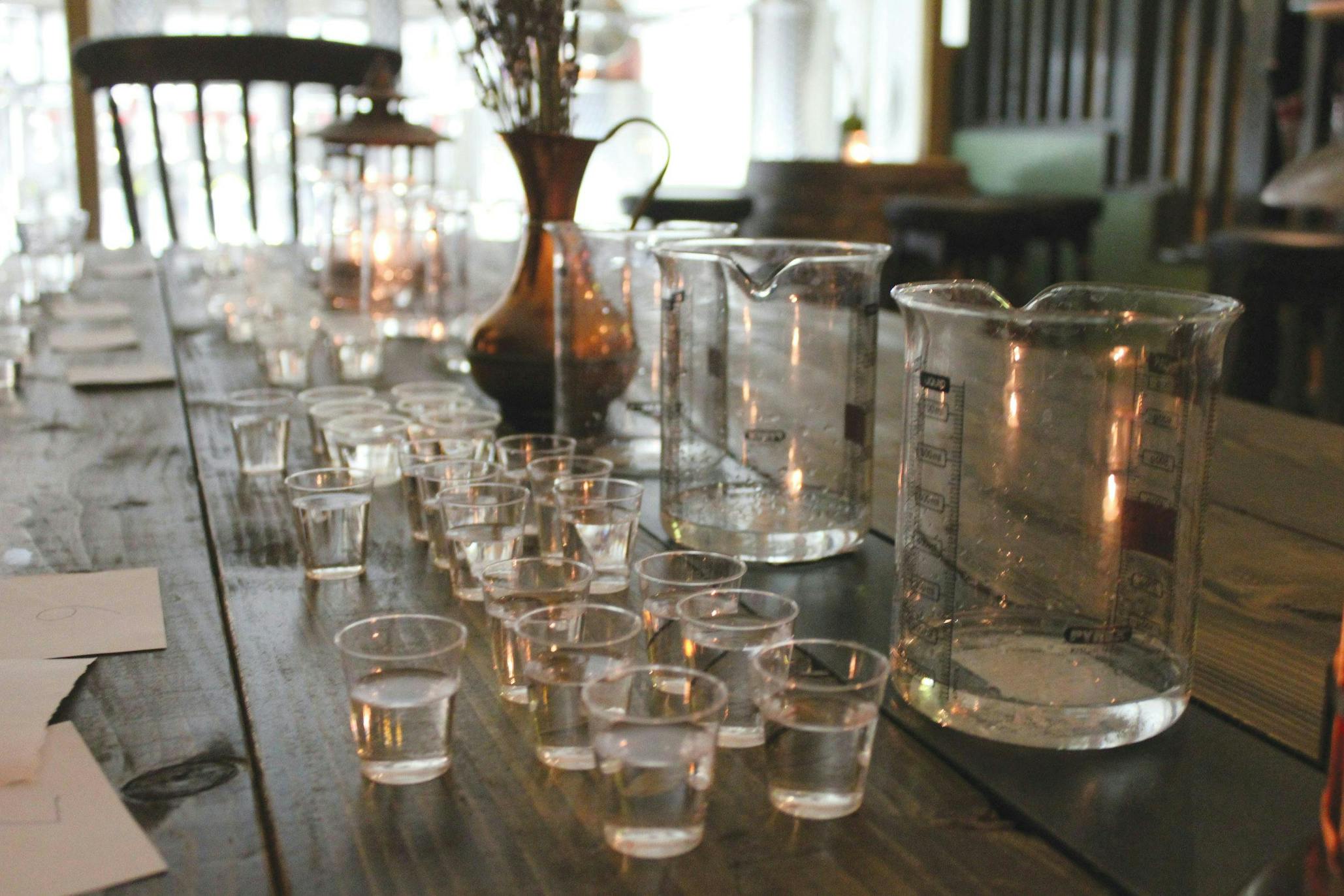
Guy says, “It’s always been an interest of Jonathans. He had the space and knew the industry, and had already grown to love making different styles of gin. So he went for it, and fulfilled his dream of opening a distillery.”
But turning a City basement into the first working distillery was no mean feat. “It was a massive undertaking,” laughs Guy. “But Jonathan’s vision was very clear and he was very determined.”
When you first walk down the stairs into City of London Distillery, or COLD Bar as it’s called for short, past prints of old London and the first gin craze, you’ll find yourself in what, at first glance, might look like a swish cocktail bar. But head past the bar, where master mixologists can be found whipping up expert cocktails, and you’ll see a working distillery behind tens of thousands of pounds worth of bomb-proof glass.
“The great thing about the space is that you can always see the gin being made,” Guys says. “There are three copper stills, from floor to ceiling.”
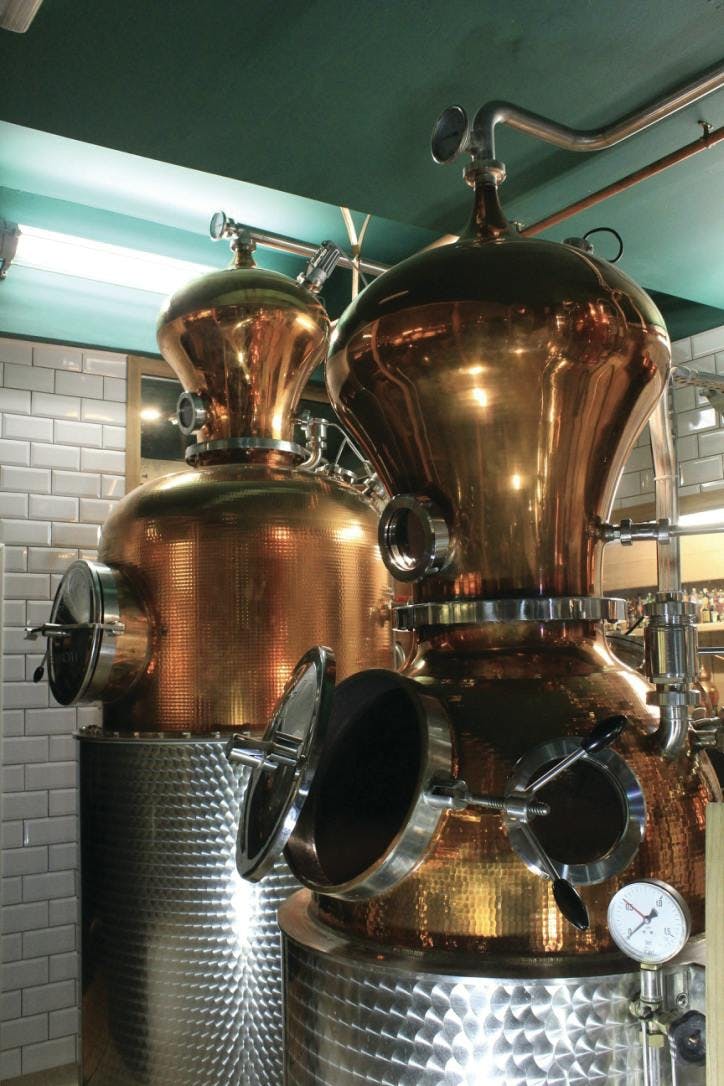
Jon and Guy developed the City of London range on their three copper CARL pot stills: Jennifer and Clarissa, after the stars of the TV show Two Fat Ladies, and new arrival Elizabeth, to honour the queen’s 90th birthday.
“Seeing them in action is fantastic,” Guy says. “We take great care with every distillation. Our whole range is for gin purists.”
That range is now five strong, all with a signature, sophisticated palate and bottled in a glass testament to the City, topped with the dome of St Pauls Cathedral. “The bottle is inspired by what we live and see every day,” says Guy.
City of London and the cocktail bar in its distillery were soon raking in awards and racking up a reputation as a go-to spot for gin lovers in London. But, after a cracking run as head distiller, Jon wanted to take a step back. It went without saying who would take his place at the still. Guy stepped into the spotlight.
Oranges and Lemons
For his first turn as City of London Distillery’s master distiller, Guy wanted to pay tribute to London – and he couldn’t get a certain nursery rhyme out of his head.
Oranges and lemons, say the bells of St Clement’s
You owe me five farthings, say the bells of St Martin’s
When will you pay me? say the bells at Old Bailey
When I grow rich, say the bells at Shoreditch
When will that be? say the bells of Stepney
I do not know, says the great bell at Bow
St Clement’s; St Martin’s; Old Bailey; Shoreditch; Stepney and Bow – these were the focal points of old London, around which many myths and legends have arisen over the centuries. In particular, the first couplet caught Guy’s attention.
City of London Distillery’s range of gins had always had a citrusy edge. So, Guy thought, why not build his first gin around the bright flavours of oranges and lemons? The idea for the Six Bells Gin in your Gin of the Month box was born.
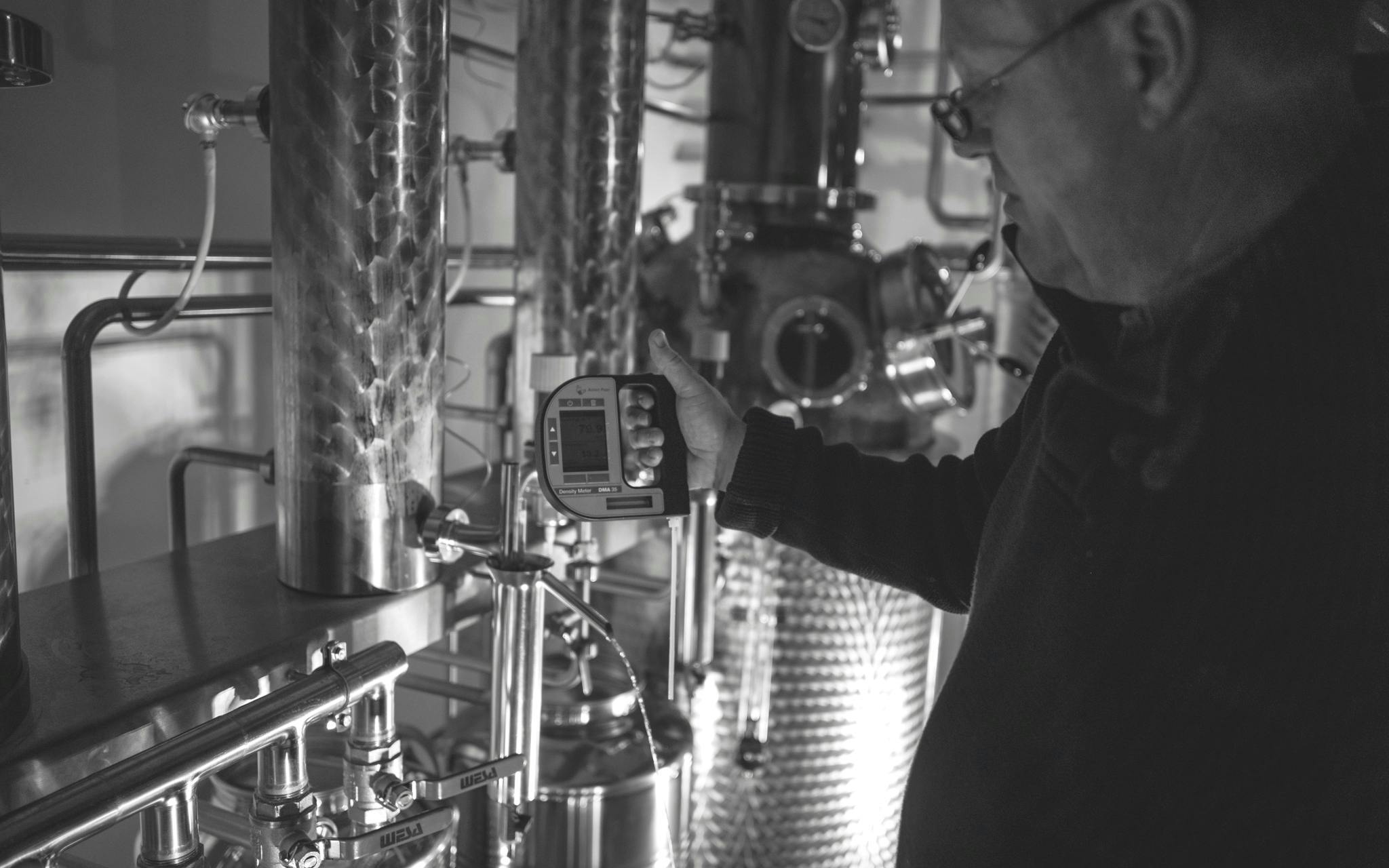
“I’ve always helped Jon,” Guy says, “and we worked together to develop the City of London range, but this is my first sole attempt. I’m very proud.”
The gin in your September Box, an exclusive for Craft Gin Club members, is a combination of City of London Distillery’s signature sophistication with Guy’s new approach to flavour. Alive with the zing of lemons and oranges, it took a year to develop this gin.
In the end, Guy went for a classic gin base and then ramped up the citrus notes, relying on vapour distillation – a style in which the botanicals are suspended in a muslin bag inside the still, to better pick out their gentle and complex flavours – to make the citrus notes sing.
The result is the gin in your Gin of the Month box: complex yet bright, ideal in a gin and tonic yet versatile in cocktails, a citrus-forward gin for true connoisseurs. And who could deny the beauty of its yellow bottle, glowing in the September sunlight?
It may have been a risk to open the first gin distillery in the Square Mile for 200 years, but the exclusive bottle in your Gin of the Month box is proof: City of London Distillery is the future of gin, even as Guy pays tribute to this beautiful spirit’s past.







